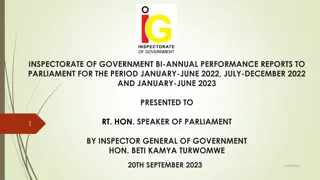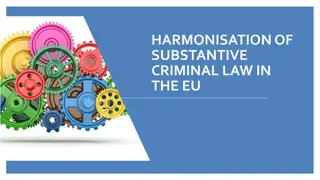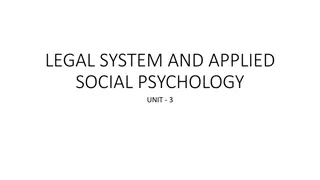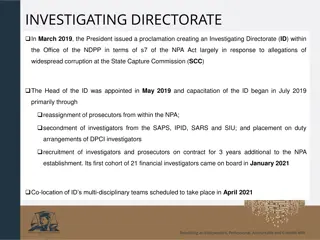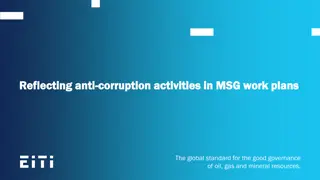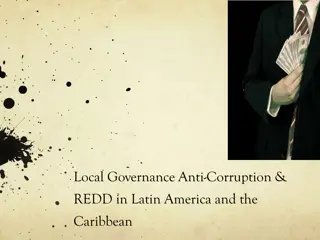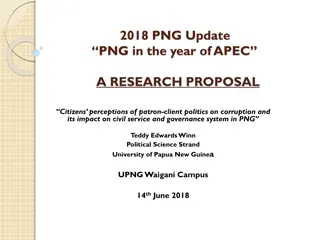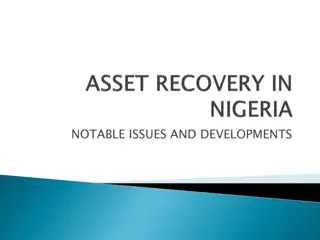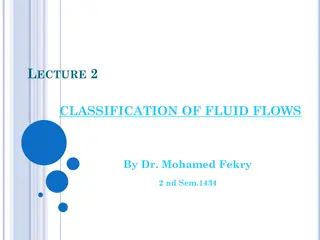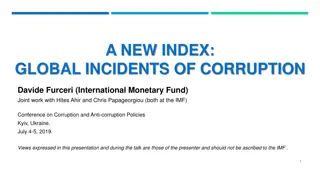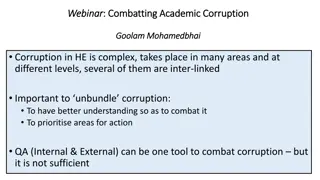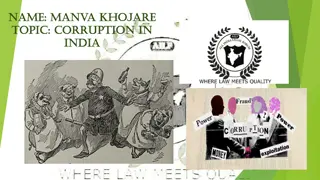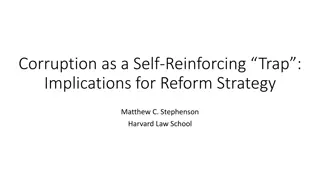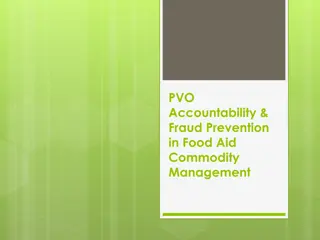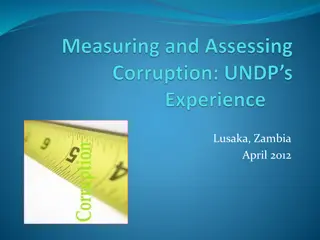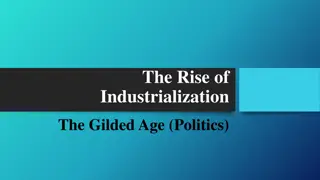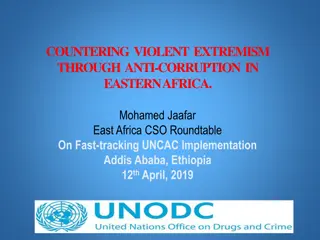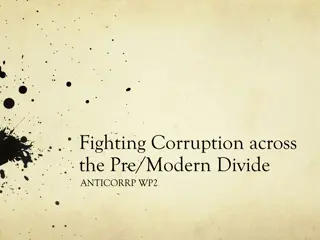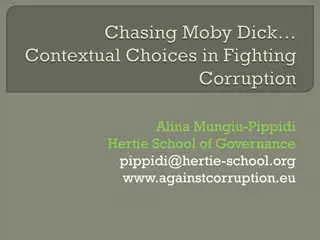Corruption versus Criminal State
Illusions debunked by stubborn structures: the Hungarian Mafia State reveals four levels of corruption - from petty corruption to the criminal upperworld and the evolution into a Mafia state.
Download Presentation

Please find below an Image/Link to download the presentation.
The content on the website is provided AS IS for your information and personal use only. It may not be sold, licensed, or shared on other websites without obtaining consent from the author.If you encounter any issues during the download, it is possible that the publisher has removed the file from their server.
You are allowed to download the files provided on this website for personal or commercial use, subject to the condition that they are used lawfully. All files are the property of their respective owners.
The content on the website is provided AS IS for your information and personal use only. It may not be sold, licensed, or shared on other websites without obtaining consent from the author.
E N D
Presentation Transcript
Corruption versus Criminal State The Hungarian Mafia State B lint Magyar
Illusions debunked by stubborn structures Illusions: of linear progress towards liberal democracies after the change of the political regimes in 1989-1990; that any regime can be built on any kind of ruins of communist dictatorships. Stubborn structures: the lack of proper separation of the three spheres of social action (political, market, communal) (Claus Offe); collusion of power&ownership (Andrey Ryabov); patrimonialization: private appropriation of the public authority (Max Weber, Oleksandr Fisun); patron-client relations (Henry Hale); centralized and monopolized forms of corruption.
Four levels of corruption Petty corruption: day-to-day corruption, which is characterized by scattered, sporadic face-to-face direct corruption transactions, involving the players of economy and of public authority. Oligarchic state capture: when corruption vertically reaches even the higher layers of governance and these are not only occasional transactions, but show the sign of regular nature. The cooperation of players becomes more complex not only on the side of corruption supply, but also on the side of corruption demand, namely that the corruption partners on the side of economy are in many cases oligarchs or criminals of the organised underworld. It can take the form of corporate facilitated state crime or state facilitated corporate crime, depending who is the dominant or initiating actor. Party state capture: when the establishment of regular corruption channels is initiated not by oligarchs or the organized underworld but by party politicians. Thus it is a form of top-down, rather than bottom-up, state capture. It is definitely partial, for it is done by some politicians and over a particular area (e.g. a mayor over a city or a chief bureaucrat over the hierarchy below him). When any of the politics-backed patronal networks get into a monopolistic position, it regularly evolves into a criminal state. Criminal state: when it is not any more the oligarchs or the organized underworld capturing the state, but a political enterprise, the organized upperworld captures the economy, including the oligarchs themselves. When the state itself operates in concert as a criminal organization, we can speak about mafia state, the privatized form of a parasite state which is the engine of relational market redistribution.
Classic Mafia: the organised criminal underworld Mafia state: the organised criminal upperworld, when a political enterprise becomes an economic one, the governance operates like a criminal organization. It is a privatized form of a parasite state. The new ruling elit: the adopted political family. The chief patron s power of enforcement works at a national level. The post-communist Mafia state is not merely a deviant form of liberal democracy, nor is it a transient formation, rather it is an independent subtype of autocracy.
Need for big data evidence The Case of Hungary Corruption Research Center Budapest, (T TH Istv n J nos)
Corruption risk at the public procurements in Hungary between 2009 and 2015 (N: 118.843; source CRCB 2016) (Corruption risk index: 0 = if there is competition and public notice; 0,5 = if one of them is missing; 1 = if both of them is missing) 0.6 0.55 0.5 0.45 EU Funds Non-EU Funds 0.4 0.35 0.3 0.25 0.2 2009 2010 2011 2012 2013 2014 2015
Share of public procurements without public notice in Hungary between 2009 and 2015 (%) (N =121.849; source: CRCB 2016) 70 60 50 40 30 20 10 0 2009 2010 2011 2012 2013 2014 2015
The change of overpricing in Hungarian public procurements between 2009 and 2015(N = 123,224; source: CRCB 2016) 8 7 6 5 4 3 2 1 0 2009 2010 2011 2012 2013 2014 2015 (The mean squared error (MSE) of contract prices of Hungarian Public Procurements from the theoretical (Benford s) distribution by year, first digits, 2009-2015, N = 123,224)
Public Perception of Criminal State The Case of Hungary Medi n Public Opinion Research Institute Endre HANN, December 2017
Petty corruption or grand corruption The distribution of respondents according to their party-simpathy (%) (Source: Medi n Public Oppinion and Market Research Institute, December 2017) 85 90 74 80 67 Ocassional private action of dishonest public servants 70 59 60 50 Centrally, systematically organized action from above 40 33 30 22 21 14 20 10 0 Fidesz (rightwing government party) Leftwing, green, liberal opposition parties Jobbik (extreme rightwing opposition party) Undecided
How likely is, that the prime minister gets richer via frontmen and stooges? The distribution of respondents according to their party-simpathy (%) (Source: Medi n Public Opinion and Market Research Institute, December 2017) 90 82 80 65 70 Very likely 60 51 45 50 38 Likely 40 29 29 28 30 13 20 Out of question 7 5 10 0 0 Fidesz, rightwing governing party Leftwing, green, liberal opposition parties Jobbik, extreme rightwing opposition party Uncertain (The question: According to you is it likely , that Istv n Garancsi, L rinc M sz ros or Andy Vajna are the frontmen or stooges of Viktor Orb n, and the significant part of their huge business profit is chanelled to the Prime Minister?)
Definition of the present Hungarian political regime The distribution of respondents according to their party-simpathy (%) (Source: Medi n Public Opinion and Market Research Institute, December 2017) 100% Does not know 3 4 8 3 3 5 17 90% 6 System of National Cooperation (Self definition of the gov.) 9 8 21 4 80% 12 20 18 Western democracy 70% 7 60% Illiberal democracy 11 50% 28 30 49 Autocratic regime 40% 30 30% Mafia State 20% 7 31 29 3 Dictatorship 10% 17 7 3 3 2 2 1 0% Fascistoid regime Fidesz (rightwing government party) Leftwing, green, liberal opposition parties Jobbik (extreme rightwing opposition party) Undecided
Charasteristics of the Hungarian Post-Communist Mafia-State
The distinctiveness of the Mafia State as a subtype of autocracy: 1.) The concentration of political power and the accumulation of personal/family wealth occur in unison. 2.) The forced and systematic replacement of the political elite takes place in parallel with that of the economic elite. It takes the forms of rent-seeking, kleptocracy and centrally led corporate raiding. 3.) The organised underworld's illegal physical coercion, characteristic of the classic mafia, is replaced by bloodless, legalized public authority sponsored coercion. 4.) The Mafia state - while coercively extracting personal fortunes constrains or eliminates individual and competitive forms of corruption, and replaces them with ransom levied from above, in a centralized and largely legalized form.
The distinctiveness of the Mafia State as a subtype of autocracy: 5.) The practice of nationalization in the mafia state: Ordinary renationalization is the complete seizure of a formerly privatized company by the state for a longer-lasting period Deprivatization is the expansion of state shareholding among privatized companies and state-led holding structures Cold nationalization is the nationalization of certain market elements of the economic environment Bandit nationalization, which means the nationalization of private assets Market-acquiring nationalization is the nationalization of an economic activity or the right to it Competency nationalization means a central appropriation of municipal responsibilities Transit nationalization is the taking of a private company into temporary state care Money-pump nationalization is the nationalization of the losses of an economic activity and the privatization of its profits
The distinctiveness of the Mafia State as a subtype of autocracy: 6.) Key players of the Mafia State: poligarch oligarch front man, stooge, strohmann corruption broker adopted political family s personal guard and secret service
The distinctiveness of the Mafia State as a subtype of autocracy: 7.) Decisions are taken outside the competence of formalized and legitimate organizations. Informal power network. It is not the model of the communist parties politburo , but the chief patron s court run by the adopted political family. 8.) In place of autonomous and normative individual and institutional positions, a patron-client chain of vassal relationships comes into being. The chief patron and the adopted political family. Instead of competitive market: relational market and relational market redistribution.
The distinctiveness of the Mafia State as a subtype of autocracy: 9. ) Patronal servants: the takeover of the leading positions of administration is not done by party commissars , who are loyal to the party, but by clients who are loyal to the chief patron, to the head of the adopted political family through personal links. 10.) Public interest is systematically subverted to private interest; decisions concern power concentration and the wealth of the adopted political family at the same time. The rule of law is substituted by the law of rule . Custom-tailored parliament and selective law-enforcement.
The distinctiveness of the Mafia state as a subtype of autocracy: 11.) The Mafia state is not ideology driven, but ideology applying. 12.) The Mafia state is compelled to bridge the gap between the sociological nature and legitimacy of autocratic rule with quasi-democratic procedures by restricting civil rights and electoral democracy. It is neither a liberal democracy, nor a dictatorship based purely on coercion.


